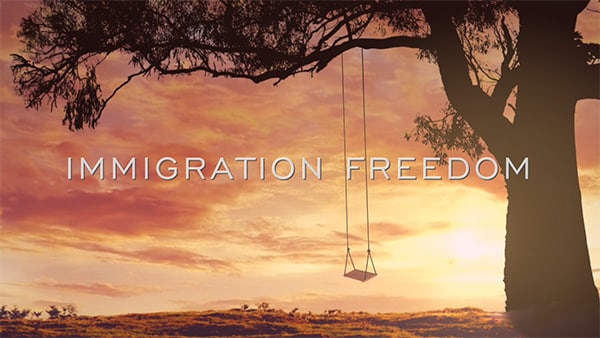Latinos in Texas face an increasingly dangerous situation when it comes to slip and fall accidents. As statistics show, they are at a higher risk compared to other demographics. In fact, the numbers are alarming. This article delves into the reasons behind this trend and explores potential solutions to address this issue effectively.
Texas is home to a large and vibrant Latino community, but unfortunately, they are disproportionately affected by slip and fall accidents. Factors such as language barriers, lack of awareness, and limited access to safety information contribute to this disparity. Understanding the nuances and challenges faced by this community is essential in developing targeted strategies to prevent these accidents.
By examining the data and gaining insights into the root causes, we can identify practical solutions to reduce the risks Latinos face in Texas. This article aims to shed light on this important issue and highlight the need for increased awareness, education, and safety measures to protect the Latino community from slip and fall accidents.
Join us as we explore the slippery statistics and work towards keeping Latinos in Texas safe from preventable accidents that can have significant consequences on their lives.
Latino Population in Texas: Demographic Overview
Texas is home to one of the largest Latino populations in the United States, making up approximately 39% of the state’s total population. This demographic encompasses a rich tapestry of cultures, languages, and traditions, primarily consisting of individuals of Mexican descent, but also including those from Central America, South America, and the Caribbean. The surge in this population can be attributed to various factors, including immigration, economic opportunities, and family reunification, contributing to the diverse cultural landscape of the Lone Star State.
Understanding the demographic profile of Latinos in Texas is crucial for addressing the specific challenges they face. Many reside in urban areas such as Houston, Dallas, and San Antonio, where the concentration of communities can lead to unique social dynamics. Additionally, the economic contributions of Latinos are significant, as they represent a vital workforce in various sectors, including agriculture, construction, and service industries. However, despite their contributions, they often encounter systemic challenges that can affect their safety and well-being.
The socio-economic conditions of the Latino community in Texas also play a critical role in their vulnerability to slip and fall accidents. Many individuals work in physically demanding jobs with limited access to safety training and resources. Moreover, the disparities in income and education levels can lead to a lack of awareness regarding the importance of safety measures. These factors, combined with the complexities of navigating a diverse workforce and community, establish a pressing need to focus on the root causes of slip and fall accidents within this demographic.
Common Causes of Slip and Fall Accidents
Slip and fall accidents are among the leading causes of injuries in the United States, resulting in thousands of emergency room visits each year. These incidents often arise from various environmental hazards that can be easily overlooked. Common causes include wet or slippery floors, uneven surfaces, poor lighting, and obstacles in pathways. Such conditions can be particularly hazardous in public places, workplaces, and residential areas. Understanding these risks is essential for developing preventive strategies to minimize the occurrence of these accidents.
In addition to environmental factors, human behaviors also contribute to slip and fall incidents. Distractions, such as using a mobile phone while walking or rushing to meet deadlines, can increase the likelihood of accidents. Furthermore, individuals who are elderly or have mobility issues are at a heightened risk of falling due to decreased balance and coordination. Recognizing these patterns can help in implementing targeted interventions to safeguard vulnerable populations, particularly in community settings where Latinos frequently interact.
Another significant aspect of slip and fall accidents is the role of weather conditions. Rain, ice, and snow can create treacherous walking conditions, especially in regions like Texas, where sudden weather changes can occur. During these times, the risk of accidents increases, emphasizing the need for proper maintenance of public and private spaces. It becomes imperative for both individuals and businesses to take proactive measures to ensure safe environments, particularly for populations that may already be at risk, such as the Latino community in Texas.

Factors Contributing to Increased Risks for Latinos
Several interconnected factors contribute to the increased risk of slip and fall accidents among Latinos in Texas. One significant aspect is the prevalence of low-wage jobs within the community, which often involve physically demanding labor. Many Latino workers occupy positions in industries such as construction, hospitality, and agriculture, where safety protocols may not be strictly enforced. The lack of proper safety training and equipment can expose workers to hazardous conditions, increasing the likelihood of slips and falls.
Another contributing factor is the socio-economic status of many Latino families. Limited access to quality healthcare and safety education can lead to a lack of awareness regarding the risks and preventive measures associated with slip and fall accidents. This gap in knowledge can perpetuate a cycle of risk, where individuals are unaware of the dangers present in their environments. Furthermore, financial constraints may prevent families from investing in home safety improvements or seeking medical attention after an accident, exacerbating the problem.
Cultural attitudes towards safety and risk can also play a role in the increased vulnerability of Latinos in Texas. In some cases, cultural norms may discourage individuals from speaking up about unsafe conditions or seeking help when they encounter hazards. This reluctance can stem from fear of repercussions in the workplace or a lack of trust in authorities. Addressing these cultural nuances is essential for developing effective safety awareness campaigns that resonate with the Latino community, fostering an environment where individuals feel empowered to advocate for their safety.
Language Barriers and Communication Challenges
Language barriers represent a significant challenge for many Latinos in Texas, impacting their ability to access crucial safety information. For individuals who are not fluent in English, understanding safety protocols or reporting hazards can be daunting. This communication gap can lead to a lack of awareness regarding slip and fall risks, as well as limited knowledge of the resources available to prevent accidents. In workplaces, this barrier can hinder effective training sessions and safety meetings, leaving employees vulnerable to hazards.
Moreover, the absence of multilingual safety materials can exacerbate the issue. Many organizations fail to provide information in Spanish or other languages spoken within the Latino community, further isolating these individuals from essential safety resources. This lack of accessibility can result in an increased incidence of accidents, as individuals may not fully comprehend the risks associated with their environments. Ensuring that safety information is available in multiple languages is vital for fostering a culture of safety that includes all community members.
Furthermore, the stigma associated with reporting accidents or unsafe conditions can be amplified by language barriers. Individuals may feel uncomfortable approaching supervisors or authorities due to their limited English proficiency, leading to underreporting of slip and fall incidents. This reluctance can perpetuate a cycle of risk, where hazards go unaddressed, and individuals remain unaware of the dangers present in their surroundings. Bridging this communication gap is essential for creating safer environments and empowering the Latino community to take proactive steps toward accident prevention.
Occupational Hazards and Workplace Safety
The nature of many occupations held by Latinos in Texas exposes workers to various hazards that can lead to slip and fall accidents. Industries such as construction, agriculture, and hospitality often involve physically demanding tasks performed in environments that may not prioritize safety. Workers may encounter uneven surfaces, cluttered workspaces, and inadequate lighting, all of which contribute to the risk of slips and falls. Addressing these occupational hazards is crucial for enhancing workplace safety and reducing accidents among Latino workers.
Employers play a vital role in ensuring a safe working environment by implementing comprehensive safety training programs. However, many Latino workers may not receive adequate training due to language barriers or lack of access to information. To mitigate this issue, employers should prioritize multilingual safety resources and provide regular training sessions that address the specific hazards associated with the job. By fostering a culture of safety, employers can empower their Latino workforce to recognize and address potential risks, ultimately reducing the likelihood of slip and fall accidents.
Additionally, the enforcement of safety regulations is essential in protecting workers from hazardous conditions. Regulatory agencies must ensure that employers comply with safety standards and provide appropriate equipment and training. Increased inspections and accountability can help create safer workplaces for Latino workers, reducing the prevalence of slip and fall incidents. Collaboration between community organizations, employers, and regulatory bodies is crucial in promoting workplace safety and ensuring that the rights of Latino workers are upheld.

Cultural Factors Affecting Safety Awareness
Cultural factors significantly influence how safety is perceived and prioritized within the Latino community in Texas. In many Latino cultures, there is a strong emphasis on family and community, which can sometimes overshadow individual safety concerns. This collectivist mindset may lead individuals to prioritize work or family obligations over their own well-being, making them less likely to report hazards or take preventive measures against slip and fall accidents.
Moreover, the influence of traditional beliefs and practices can shape attitudes toward safety. In some cases, individuals may rely on informal methods of managing risks, such as using home remedies or advice from family members, rather than seeking out formal safety training or resources. This reliance on informal safety practices can lead to an underestimation of the risks associated with certain environments, increasing the likelihood of accidents. To effectively address these cultural nuances, safety initiatives must be tailored to resonate with the values and beliefs of the Latino community.
Community engagement is vital in promoting safety awareness among Latinos in Texas. By involving community leaders, local organizations, and cultural representatives, safety campaigns can be designed to reflect the unique experiences and perspectives of this demographic. Initiatives that incorporate culturally relevant messaging and address the specific challenges faced by Latinos can foster a greater understanding of the importance of safety and encourage proactive measures to prevent slip and fall accidents.
Legal Rights and Protections for Slip and Fall Victims
Understanding legal rights and protections is essential for individuals who experience slip and fall accidents, particularly within the Latino community in Texas. Many individuals may be unaware of their rights regarding workplace safety, liability, and compensation for injuries sustained in accidents. This lack of knowledge can deter victims from pursuing the necessary legal action to seek justice and recover damages.
Under Texas law, property owners have a duty to maintain safe premises and address potential hazards that could lead to slip and fall accidents. If a person is injured due to the negligence of a property owner, they may have the right to file a personal injury claim. However, navigating the legal system can be challenging, especially for those who may face language barriers or lack access to legal resources. Providing education about these rights and the legal process is crucial for empowering victims to advocate for themselves and seek the compensation they deserve.
Community organizations and legal aid services can play a vital role in supporting Latino individuals who have experienced slip and fall accidents. By offering multilingual resources, legal guidance, and advocacy, these organizations can help victims understand their options and navigate the complexities of the legal system. Raising awareness of available legal protections is essential for ensuring that individuals feel confident in pursuing their rights and receiving the support they need to recover from accidents.
Prevention and Safety Tips for Latinos in Texas
Preventing slip and fall accidents requires a proactive approach that encompasses education, awareness, and community engagement. For Latinos in Texas, understanding the common hazards that contribute to these incidents is the first step toward promoting safety. Simple precautions, such as wearing appropriate footwear, paying attention to surroundings, and avoiding distractions while walking, can significantly reduce the risk of accidents. Educating individuals about these practices can empower them to take responsibility for their safety and that of their families.
Home safety is another critical area where preventive measures can be implemented. Families can take simple steps to create a safer living environment, such as ensuring proper lighting in hallways and staircases, removing clutter from walkways, and using non-slip mats in bathrooms and kitchens. Regular maintenance of the home, such as repairing uneven surfaces and addressing leaks, can also mitigate risks. Community workshops focused on home safety can provide valuable resources and support for Latino families seeking to enhance their living environments.
Furthermore, collaboration with local businesses and organizations can amplify prevention efforts. Establishing partnerships with employers to implement safety training and awareness programs can create a culture of safety within workplaces. Additionally, community events that promote safety education and provide resources in multiple languages can foster a sense of community responsibility for accident prevention. By working together, individuals and organizations can create a safer environment for Latinos in Texas and reduce the incidence of slip and fall accidents.

Conclusion: Promoting Safety and Awareness for All Communities
The issue of slip and fall accidents among Latinos in Texas is a pressing concern that requires a multifaceted approach. By understanding the demographic, cultural, and socio-economic factors that contribute to increased risks, we can develop targeted strategies to promote safety and awareness within this community. It is essential to empower individuals with knowledge about their rights, provide access to safety resources, and create an inclusive environment that prioritizes prevention.
Collaborative efforts among community organizations, employers, and regulatory bodies are vital in addressing the unique challenges faced by Latinos in Texas. By fostering partnerships and promoting culturally relevant safety initiatives, we can create a strong support network that advocates for the well-being of this demographic. Together, we can work towards reducing the incidence of slip and fall accidents and ensuring that all individuals, regardless of background, have access to safe environments and the resources they need to protect themselves.
Ultimately, creating a culture of safety requires ongoing education, awareness, and community engagement. By prioritizing the safety of the Latino community in Texas, we can take meaningful steps toward preventing slip and fall accidents and promoting a healthier, safer future for all. Through awareness campaigns, legal support, and preventive measures, we can empower individuals to advocate for their safety and well-being, ensuring that they have the knowledge and resources necessary to navigate their environments confidently.






